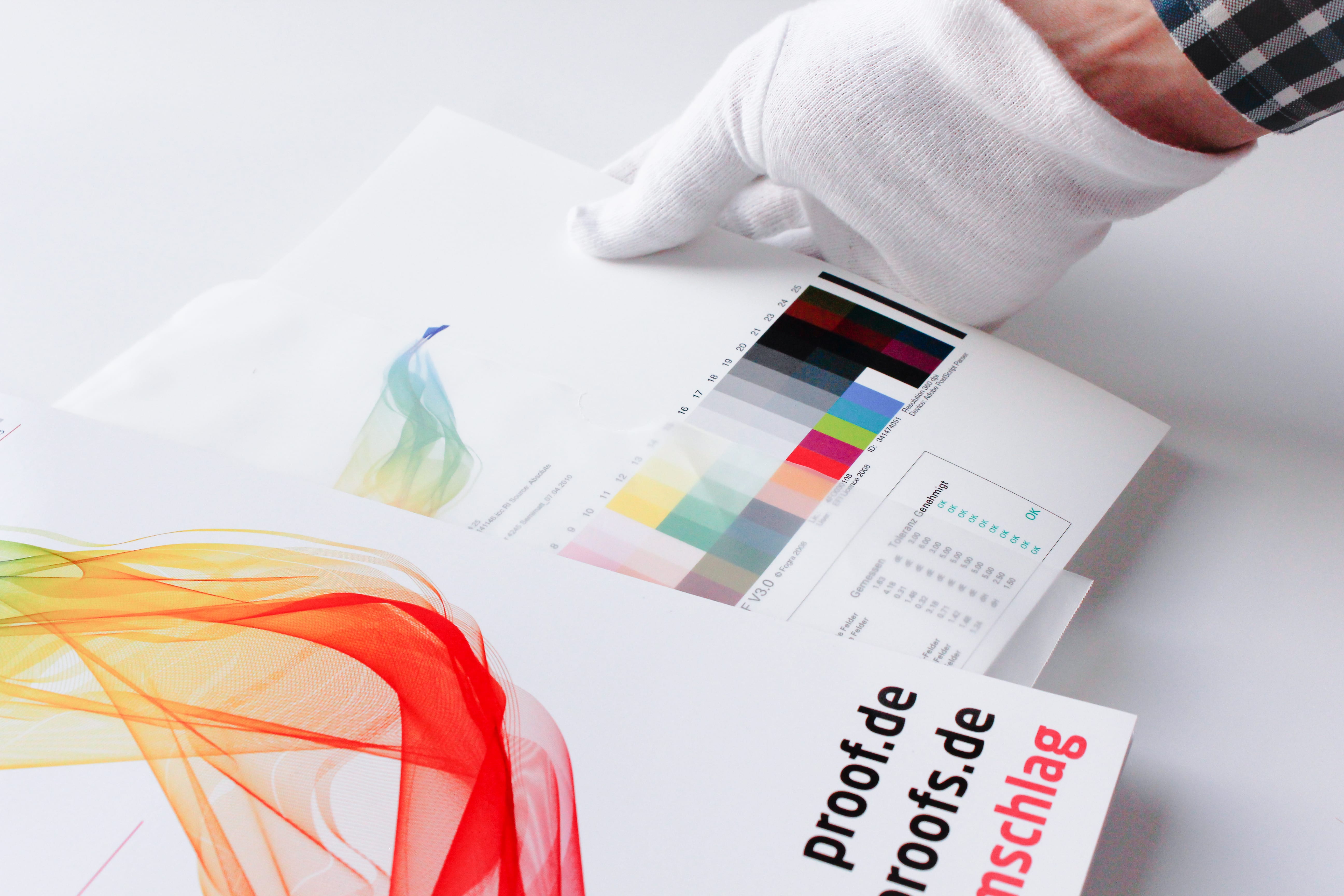- A proof is reassuring:
The proof shows the colour result of the subsequent printing.
The customer knows exactly the later result from the proof and is reassured.
The printer knows that the customer knows the proof and is also reassured. - A proof is fast:
Ordered today, delivered tomorrow: Modern proofing service providers work quickly and produce hardly any loss of time in the design and printing process - A proof is precise:
All professional service providers nowadays work with proof printers that are recalibrated at short intervals. A media wedge with test report also provides clear metrological proof that the proof is correct and within the limits of the standard deviations. - A proof is cheap:
In the past, repro studios often charged almost 30 euros for an A4 proof. Nowadays, it only costs a fraction. Proofing costs are of little importance in the production process. - A proof also shows the colors that the monitor does not show:
In most agencies, hardware-calibrated proof monitors are in short supply. And TFTs or old tubes show colors, but unfortunately some. A proof also depicts colors that standard monitors cannot display, but which can be printed. - A proof simulates newspaper as well as coated paper.
If the same advertisement is to appear in the glossy brochure for the trade fair stand, in the trade fair news and in the special supplement in the local daily newspaper for the trade fair, then the three different colour results can be excellently simulated and presented in proofs in advance. And who knows: Perhaps the customer will then have the house brochure printed on picture printing instead of on uncoated paper due to the proof, or will choose a different motif for the newspaper ad. The proof shows it. - A proof can do CMYK and more!
Modern proofing systems can reproduce up to 98% of all Pantone colours and HKS colours in the proof. This means that not only four-color, but also five, six and multicolor files can be proofed. Today, proofing is often done twice: once in CMYK plus corporate color in Pantone and once in CMYK and corporate color in CMYK. The client and agency can then decide whether the colour result is worth the extra charge for the fifth colour in the print. - A proof is made of paper.
Just like the product he’s simulating. A proof can be placed next to the print and compared under Normal. And to check it out, you can carry both to daylight, look at them in the candlelight and much more. A soft proof cannot do all this.
This is the first incomplete list. You know of other good reasons? We look forward to any comments and would be happy to add further points.










